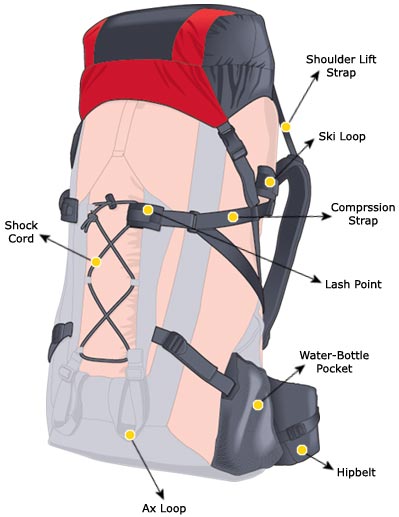Backpack fabric is generally strong nylon. While it may be treated to repel water, it’s not waterproof; seams invite a damp payload.
听•听 Proper fit is mandatory: The hipbelt should ride on the upper portion of your hip bones and the shoulder straps should wrap over your shoulder blades. Shoulder lift straps pull weight against your upper back for balance. The hipbelt and shoulder straps are Comfort Central: Firm foam is more supportive; multiple-density foam puts a soft stratum against your body.
听•听 Lean long-weekend packs eliminate such niceties as side and front pockets—lash points let you strap on need-it-quick necessities. For a long weekend, look for capacity in the high-3,000- to low-4,000-cubic-inch range; for weeklong trips, you’ll want the mid- to upper 5,000s.
听•听 Most packs are top-loaders. Panel access and sleeping-bag compartments are handy but not critical.
听•听 A pack’s internal frame is your load-transfer system. The full-blown version has two aluminum stays and a stiff plastic framesheet. Some packs also use rods to stabilize the load.
听•听 Most packs have a pouch for a hydration reservoir and ports for the hose.
听•听 Water-bottle pockets and ski loops work for stashing vertical bits like tent poles; be sure that compression straps are there to help lash ’em down.
Backpacks Explained
You stuff your pack with your most precious stuff. Harness its features—and focus on fit.

New perk: Easily find new routes and hidden gems, upcoming running events, and more near you. Your weekly Local Running Newsletter has everything you need to lace up! .
